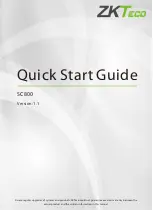
GB
version
E
Copyright Bravilor Bonamat B.V.
6
1.0
4.
OPERATION
4.1
Controls
The machine is provided with two operating
panels, one at the front (fig.2 ) and one at the
inside (fig.3 ). During normal daily use of the
machine by the consumer, only the operating
panel at the front is used. For programming and
specific activities the operating panel at the inside
is important as well.
4.1.1
Operating panel front
5
<
>
5.1
5.2
5.3
5.4
5.5
5.6
5.7
5.8
Fig. 2 Operating panel front
4.1.1.1
Display
D
The display (5.) shows during normal use while
programming, rinsing or descaling the machine
and in the case of failures various symbols,
values and messages that will be explained in
this manual. Fig.2 displays the basic position
(operational position).
4.1.1.2
Buttons and keys
5.1
Selection button ‘regular coffee’
5.2
Selection button ‘mild coffee’
5.3
Selection button ‘strong coffee’
5.4
Selection button ‘extra strong coffee’
5.5
Selection button ‘hot water’
5.6
Setting key [>]
5.7
Enter key (blocked during normal use of
the machine)
5.8
Setting key [<]
The setting keys (5.6 and 5.8) have more than
one function. During normal use of the machine
these keys are only used to choose between cup,
mug, half a jug and whole jug respectively).
The [Enter] key (5.7) is blocked during normal
use of the machine.
4.1.2
Operating panel inside
19.1
19.2
19.3
19.4
19
Fig. 3 Operating panel inside
4.1.2.1
Electronic control
The housing of the electronic control with
operating panel (19.) of the machine is found at
the inside of the door (3.). The four keys are for
service and maintenance activities.
4.1.2.2
Keys on the electronic
control
19.1 Key ‘reset counter litter bin’
19.2 Key ‘open/close Brewer’
19.3 Key ‘rinse’
19.4 Programming key
While the machine is in use, the factory default
settings may appear to be incorrect or insufficient
for the situation in which the machine is used.
These settings can be adjusted following the
instructions in §6.2.
The present chapter (4.) therefore only describes
the normal daily use of the machine.
Periodic maintenance by users with limited
authority is described in Section 5.
















































